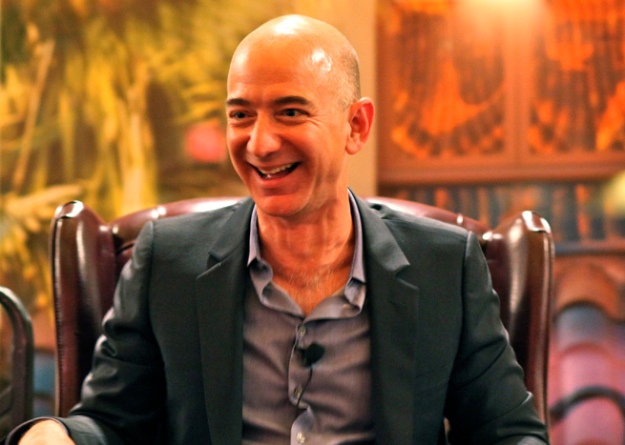
Jeff Bezos. Painting (cc) 2017 by thierry ehrmann.
Having tracked the rise of The Washington Post under owner Jeff Bezos, executive editor Marty Baron and chief technologist Shailesh Prakash in my 2018 book “The Return of the Moguls,” I’ve watched its dispiriting decline with sadness. On Sunday, that decline was underscored by Sally Buzbee’s departure as executive editor. CNN media reporter Oliver Darcy has the story.
Lest we forget, Bezos did not choose Baron and Prakash; rather, he inherited them from Graham family ownership after he bought the paper in 2013 for $250 million. And though Bezos had the good sense to keep them and give them the resources they needed, it was their vision that created a great digital, nationally focused news organization that was positioned perfectly for the rise of Trump. Maybe an early warning sign was that when Bezos did get to make a big hire, he chose Ronald Reagan apparatchik Fred Ryan as publisher. As Baron makes clear in his book “Collision of Power,” Ryan did not prove to be an inspired choice.
Since Donald Trump left office, it’s been nothing but a downhill slide for the Post, which, according to the new publisher, Will Lewis, lost $77 million last year and about half its audience since 2020. Was that entirely the fault of Buzbee, a former Associated Press executive editor who took the Post’s helm after Baron retired in early 2021? Of course not. But it all happened on her watch, so it’s not a surprise that she’s leaving.
As Poynter media reporter Tom Jones points out, it’s not 100% clear that Buzbee was fired. It’s possible that she decided she wanted nothing to do with Lewis’ recently articulated vision, which includes having “AI everywhere in our newsroom,” according to Semafor media reporter Max Tani. Ugh.
The new executive team sets off some alarm bells. Lewis is a former publisher of Rupert Murdoch’s Wall Street Journal who reportedly was involved in helping Murdoch clean up his tabloids’ phone-hacking scandal in the U.K. a dozen years ago, according to David Folkenflik of NPR. Buzbee will be replaced on a temporary basis by Matt Murray, a former editor-in-chief of the Journal. After the 2024 election, Murray will slide over to a newly created position creating service and social media journalism while the main news product will be under the direction of Robert Winnett, currently deputy editor of The Telegraph Media Group, a right-wing news organization. Media critic Dan Gillmor wrote on Mastodon:
The Washington Post is about to lurch sharply to the right politically as former Murdoch apparatchik solidifies his grip on the organization. Current editor Buzbee is out, and he’s bringing in people from Murdoch’s Wall Street Journal and the Telegraph (right-wing UK news org).
I’m willing to wait and see, in part because The Wall Street Journal remains a great newspaper notwithstanding its editorial page, whose right-wing orientation precedes Murdoch’s ownership. I’m deeply concerned about what Lewis has in mind with his artificial intelligence initiative, though.
For the second time since he bought it in 2013, Jeff Bezos is faced with the challenge of reinventing The Washington Post. He succeeded spectacularly the first time, with years of growth, profitability and influence. This time, though, he’s doing it with people he chose himself — and there are caution signs all over the place.





